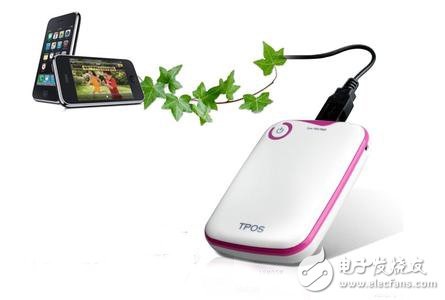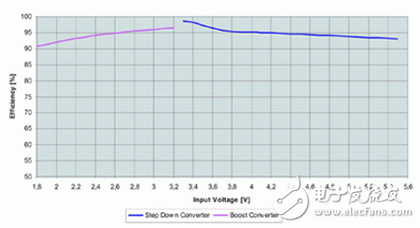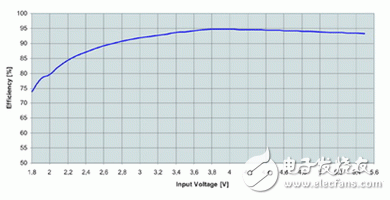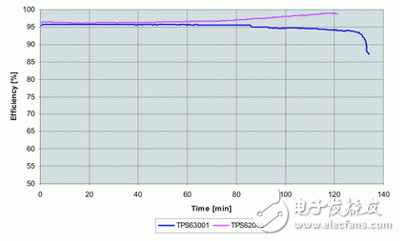There is a growing trend to increase functionality or improve performance in the design of many portable products such as cell phones, smart phones, digital media players or digital cameras. This is usually achieved by using some of the more powerful processors and adding more complex analog circuits, but the result is higher power consumption in the application circuit. Increasing power requirements can be met by increasing battery capacity, but this requires larger capacity batteries or improved battery technology. Often, people do not choose to increase the size of the battery because the size of the case is limited. Due to advances in battery technology and the development of new technologies that do not meet the high power requirements of the same size level, more advanced power management circuits are needed. At the same time, the need for small solutions has made this challenge even more difficult.
In the past, in order to achieve the required performance, only a few linear regulators were needed. These regulators are connected directly to the battery to produce the required system voltage rail. Many power management units used in portable products use only a few linear regulators to control power consumption. The typical battery technology that was used at the time was a 3-cell NiCd or NiMH battery pack. At the same time, these chemical properties have been almost completely replaced by single-cell lithium-ion batteries because of their higher performance. As the demand for current increases in many applications, some linear regulators have been replaced by more expensive but more efficient buck converters. Some power rails such as processor cores and I/O are usually produced this way.

Since the linear regulator and buck converter can only regulate the output voltage when their input voltage is high, if the battery voltage drops below the programmed output voltage, then the system needs to be turned off. The minimum voltage drop margin of a linear regulator or the voltage drop across the inductor and switch must be added to the output voltage. Therefore, for a typical 3.3V rail from a lithium battery, the typical battery voltage for system shutdown is 3.4V. The remaining charge that occurs when discharged to 3.0V will not be used in this case. Measurements show that the current charge in lithium-ion batteries is about 10%. This means that any power management solution that can take advantage of this remaining power must be able to operate at an efficiency that is 10% lower than the efficiency of the buck converter solution. In other words, any alternative solution that uses a 97% average efficiency buck converter must operate at least at a higher average efficiency than 87% to extend the run time of a single battery charge. This is a huge challenge for many buck-boost converter solutions. The general efficiency of a SEPIC or reverse solution is 85% of the maximum range of economically viable solutions. In order to achieve this efficiency, various efficiency-enhancing methods such as synchronous rectification have been considered, and such solutions are larger in size than buck converters. There are always 2 switches simultaneously switching in the 4-switch buck-boost conversion. In a very optimized solution, using this buck conversion will produce the same efficiency (85%). Therefore, from this point of view, the use of a buck-boost converter does not work, and for this reason people have not considered using this buck converter.
However, there are some other challenges. For example, a cell phone uses a high current pulse to drive its RF-PA during data transmission. These pulsed currents can be obtained directly from the battery, which can cause battery impedance and additional voltage drop across the battery connector. Due to the low supply voltage, this may cause the system voltage monitor to shut down the system when a current pulse occurs. LED-based camera flash applications in mobile phones, or booting a hard drive in a media player application, can have a similar effect on the battery. These problems are exacerbated by the increase in battery impedance due to aging or low temperatures. In this case, the buck-boost converter can be used to handle the voltage drop of critical system voltage rails. This makes the system more stable and reliable, while allowing lower battery voltage discharge.
In addition, the battery is also being improved. In general, increasing battery capacity is accompanied by a wider range of output voltages. For example, with future lithium battery technology, batteries can be charged up to 4.5V while being discharged down to 2.3V. Taking an intermediate voltage of 3.4V allows a significant portion of the battery capacity to be left unused. There are also some battery technologies under development that will work well below 3.4V (eg Li-S).
In this case, a buck-boost conversion will definitely be required. An easy way to solve this problem is to generate a higher system voltage rail (eg 5V) that can be used to generate all system voltage rails that are above the battery's cutoff voltage. This can be done by using a larger high efficiency boost converter and cascaded buck converter. The total power conversion efficiency can easily reach over 90%. Unfortunately, more boost converters require more space, which is not usually available in portable handheld devices.
Another option is to use a buck-boost converter to generate the system voltage rail directly from the battery. As mentioned above, power conversion efficiency is a key factor in designing a competitive power management solution. Another important factor is the size of the solution. With this in mind, a buck-boost conversion solution based on SEPIC or reverse topology is not suitable because it requires more bulky passive components and is generally less efficient. A single inductor solution with 4 switches has the maximum potential to meet these requirements. However, in a simple drive solution, it has two switches working at the same time at runtime. Using this solution not only sacrifices efficiency, but also increases the requirements for inductor and switch size because of the flow through These components have a higher RMS current. Driving only one side of these switches from the source means that the device is always operated with a buck or boost converter for maximum efficiency, while the lower RSM current also results in the smallest solution size. In this case, buck and boost conversion are done at the operating point where both topologies have the highest efficiency. An example of the relationship between the efficiency and boost (TPS61020) and buck (TPS62046) converter input voltage curves in Figure 1 shows this.

Figure 1 Boost (TPS61025) and buck (TPS62046) converter efficiency curves versus input voltage
Figure 2 shows the efficiency vs. an input voltage for an optimized buck-boost solution such as the TPS63001, which shows the perfect implementation of this control method.

Figure 2 Buck-Boost Converter TPS63000 Efficiency vs. Input Voltage
As previously predicted, when discussing the efficiency curves of the independent boost and buck converters, they achieve maximum efficiency when the input and output voltages are close. Since this is the most likely buck-boost operating state, the TPS63001 perfectly solves some of the problems in this application. As we can see in Figure 2, this optimized control scheme achieves efficiency in the 95% range at critical operating input and output voltage conditions. The TPS63001 can also be used to extend the run time of applications powered by standard Li-Ion batteries. This can be achieved by fully charging the battery when it is discharged to 3.0V or even 2.5V, as long as the integrated safety circuit allows it. Figure 3 shows the power conversion efficiency of discharging a battery to 2.5V using the TPS63000. Compared to a power solution based on a high-performance buck converter (TPS62046), battery life can be extended by 15% with both converter architectures using the same load.

Figure 3. Efficiency of buck-boost and buck converters during battery discharge
Fiber Optic Components,Parts Of Fiber Optic Cable,Fibre Optic Connector,Parts Of Optical Fiber
Cixi Dani Plastic Products Co.,Ltd , https://www.danifiberoptic.com